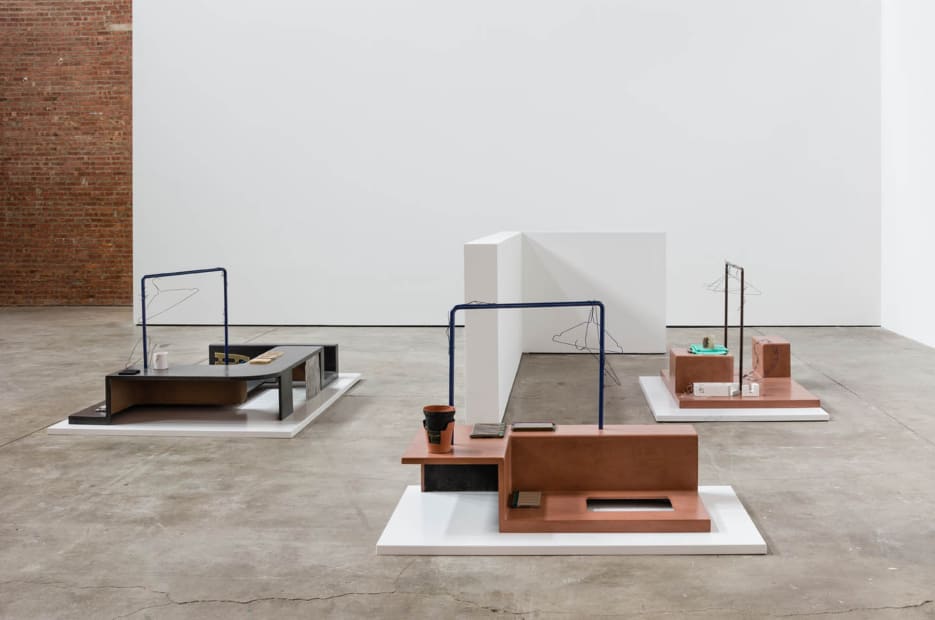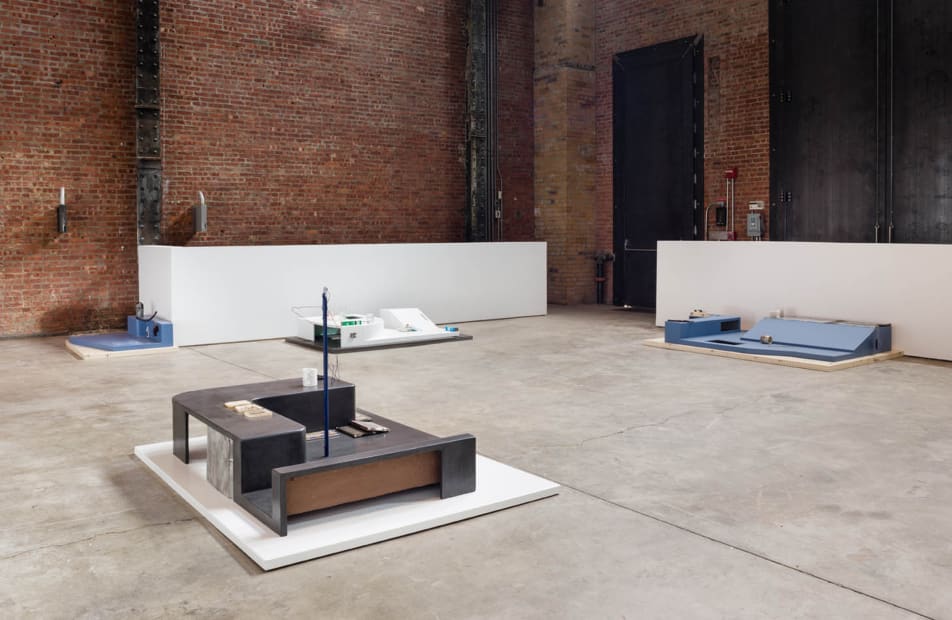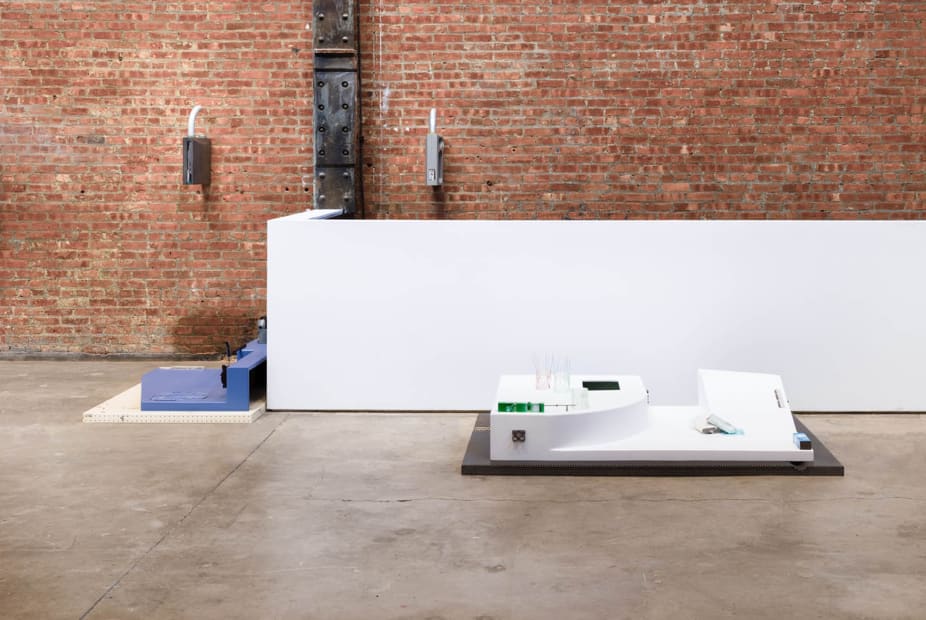Magali Reus: Spring for a Ground: SculptureCenter, New York
The nonfunctional combination locks and sidewalks in Magali Reus’s exhibition Spring for a Ground evoke a sense of order and logic that, paradoxically, evades analysis. The locks appear to operate by month, weekday, and color, and the street curbs contain objects and patterns, both providing nagging clues to a system we can’t quite grasp. One is reminded of George Perec’s book An Attempt at Exhausting a Place in Paris, in which he takes note of all the events and things appearing at Place Saint-Sulpice during one weekend in 1974: “A woman goes by; she is eating a piece of tart,” “A bus. Japanese,” “A 63 goes by,” “Pigeons on the plaza.” This exhaustion of place reminds us only of what is missing. A catalogue of things and events, mostly mundane, condenses time into passing moments that might have been noticed, and likely not. In her work, Reus similarly observes, in detail, seldom-considered public places and mechanisms, and produces something surreal and puzzling out of them. Ostensibly less empirical in approach than Perec, Reus likewise takes inventory of time and space, collecting things that have moved through the urban landscape; in recording them, she finds the poetic in the clinical.
The sidewalk that Reus references in fragmented form in her series, In Place Of (2015), is a surface that contains the physical and psychic traces of time. The title of the series evokes transition and suggests the interchangeability of forms and structures that characterizes the urban experience. Mixing in domestic objects and materials—keys and toilet paper pattern imprint—the curb becomes that specific field between inside and out. Reus’s sidewalks contain imprints of textures, small objects, forgotten items. There is a fossil of rat skeleton etched into In Place Of: Sundries, reinforcing the notion of the passage of time and life without specifying its details. There is a footprint. Broken mugs rest on the curb surface in In Place Of: Pin Drop and a pine tree car freshener dangles in In Place Of: Tectonics, suggesting fields of space that contain a variety of components rather than constituting whole structures. The individual objects left on the curbs are missing information. Sculptures of toothpaste containers without any text still retain their fresh message through color and image. Clothes hangers dangle on bike racks. Expertly rendered, the sculptures are full of partial bits of information, clearly incomplete.
The sidewalk is a product of urban engineering, a largely ignored surface we step on to get from here to there. It’s a space designated to support bodies and facilitate their movement; its curb separates and protects them from danger. It’s the interstitial realm between architecture and the machine-congested street. A majority of life is lived there. Over time, it becomes littered with trash, pieces of gum that could be ancient; its texture is mapped by the events resulting from quick passage. Moldy toast and a cave drawing with a phone number doodled next to it further an archaeological quality to the works; these are things caught in the arc of time. What is dropped on the sidewalk is usually left behind, until Reus returns us to it.
In Reus’s new series of lock sculptures, Leaves (2015), another ordinary thing becomes the subject of bemused scrutiny. Here, however, a bizarre rationale is at play. These combination locks, too large for most lockers, do not operate as we expect. In their exposed interior, we see months of the year, colors, and numbers organized without any comprehensible order. The locks seem to be confused with clocks––perhaps a phonetic slip––or a calendar. They appear to protect or contain things and space, as well as time. Their mechanical function is exaggerated through the presentation of interior springs and levers, even a zipper, suggesting a complex function for the mysterious contraption they house.
Accumulations of mundane things create perplexing landscapes in Reus’s street curbs and locks. The information the objects, numbers, letters, and other elements provide point to what’s absent. The partially rendered fragments incorporate codes and systems that announce their subjective construction and alert us to our inability to discern their exact meaning in these new scenarios. Like Perec, Reus records things and times that have caught the eye, indicating what has been remembered, hinting at what has been forgotten, and reflecting how little is known
Photo: Jason Mandella






